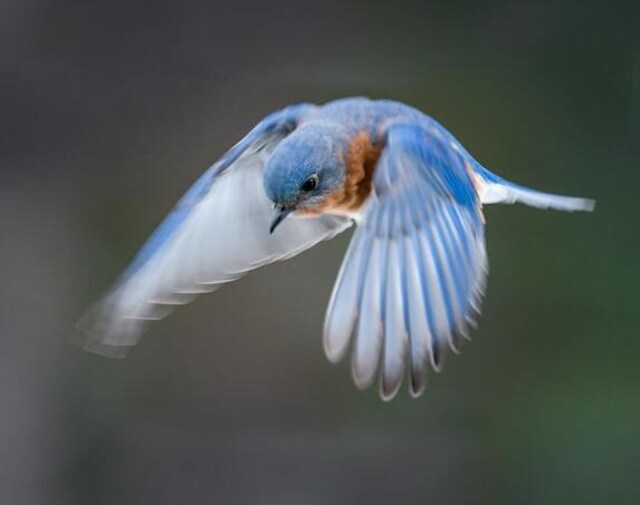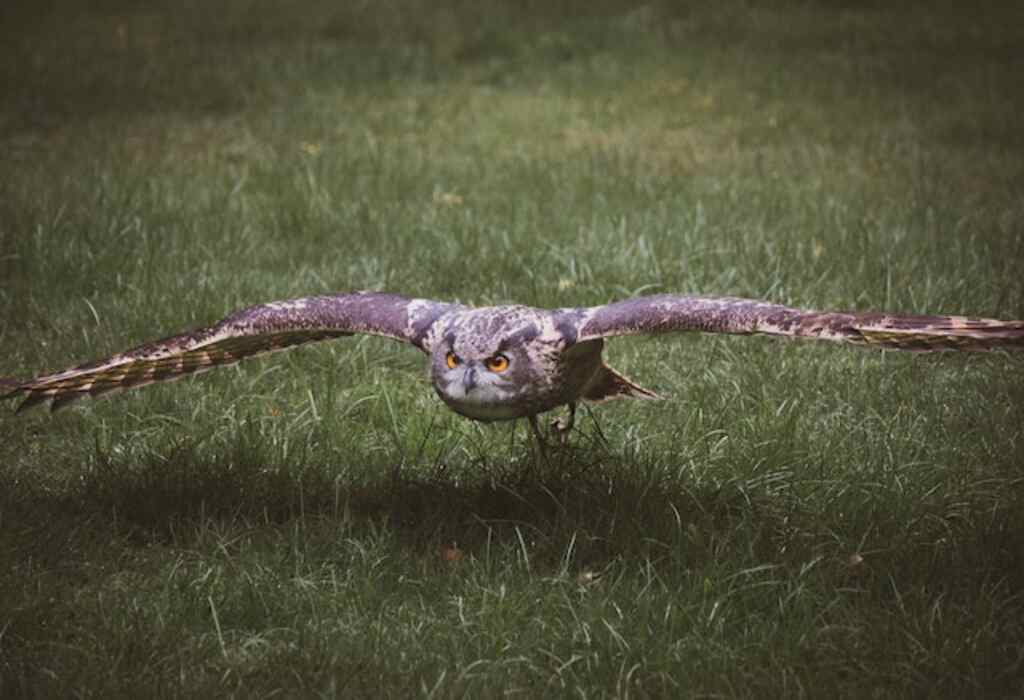Have you ever wondered why some birds fly low to the ground? This behavior has long been a subject of fascination and intrigue, with various interpretations and meanings attributed to it.
In this article, we’ll explore the different flight patterns of birds and what their altitude can indicate. We’ll also delve into the symbolic meanings and spiritual significance often associated with birds flying low.
Whether you’re a bird enthusiast or simply curious about the natural world, read on to unravel the mystery behind birds that fly low.
Table of Contents
- 1 Key Takeaways:
- 2 What Does It Mean When Birds Fly Low?
- 3 Understanding Bird Flight Patterns
- 4 Symbolism of Birds Flying Low
- 5 Exploring Interpretations of Low-Flying Birds
- 6 Superstitions Surrounding Birds Flying Low
- 7 The Science Behind Low-Flying Birds
- 8 Factors Influencing Low Flight
- 9 Observing Low-Flying Birds: Things to Consider
- 10 Cultural and Historical References
- 11 Conclusion
- 12 FAQs: What Does It Mean When Birds Fly Low?
- 12.1 What does it mean when birds fly low?
- 12.2 What are bird flight patterns?
- 12.3 Why do birds fly close to the ground?
- 12.4 What is the symbolic meaning of birds flying low?
- 12.5 Are there superstitions associated with birds flying low?
- 12.6 What are the scientific explanations for birds flying low?
- 12.7 What factors influence birds to fly at lower heights?
- 12.8 What should I consider when observing low-flying birds?
- 12.9 Are there cultural and historical references to birds flying low?
- 13 Author
Key Takeaways:
- The behavior of birds flying low to the ground has captivated people’s curiosity and intrigue for centuries.
- Birds’ altitude and flight patterns can reveal important information about their behavior and environment.
- There are various interpretations and meanings attributed to birds flying low, including spiritual significance and cultural beliefs.

What Does It Mean When Birds Fly Low?
Birds flying low can be a sign of several things, depending on the context and the species of bird. In some cases, birds may fly low to avoid predators, such as hawks or eagles, that hunt from above. Flying low can also help birds navigate through dense vegetation or find shelter from strong winds.
Additionally, some species of birds, such as swallows and swifts, are known for flying low over bodies of water to catch insects or other prey. In some cultures, seeing birds flying low is considered to be a sign of bad luck or impending danger.
However, it’s important to note that the meaning of birds flying low can vary depending on the specific circumstances and cultural beliefs.
Understanding Bird Flight Patterns
Birds are fascinating creatures, and their flight patterns are a source of wonder for many. Each bird species has its unique characteristics and habits, making their flying behavior a valuable tool for bird-watching enthusiasts.
One of the most intriguing flight patterns is when birds fly close to the ground. Although this behavior may seem random or accidental, it is often indicative of various factors.
The Significance of Birds Flying Close to the Ground
There are several reasons why birds may fly close to the ground. For example, some species such as plovers, sandpipers, and killdeer, prefer to forage in open fields and shorelines, making low-level flights necessary for them to spot their prey.
In contrast, other birds, such as the American Woodcock, engage in a unique aerial display called “sky dance” during the mating season. This behavior involves flying low over a specific area while emitting a distinctive buzzing sound, a maneuver that attracts females and intimidates other males.
Another reason for low-flying behavior is related to wind currents. Birds may fly close to the ground to take advantage of favourable wind patterns that help them conserve energy or speed up their journey.
Finally, some bird species may fly at a lower height due to their natural habitat. For example, forest-dwelling birds such as the Red-tailed Hawk may fly low under the canopy to locate prey or navigate around obstacles.
The Different Flight Patterns Exhibited by Birds
While low-flying behavior is a notable case, birds exhibit various flight patterns that reflect their unique characteristics and purposes. Some birds, such as the Hummingbird, are known for their hovering ability, which enables them to feed on nectar from flowers while maintaining a stationary position in the air.
Other birds, such as the Eagle, rely on soaring, gliding, and flapping to cover long distances without wasting too much energy. These birds use thermals, or rising columns of warm air, to stay airborne, which allows them to travel great distances without needing to flap their wings continually.
Finally, some birds, such as the Albatross, have the ability to fly long distances or remain airborne for extended periods by using a combination of flapping and soaring. These birds have a unique wing shape and size that reduces drag and maximizes lift, allowing them to fly efficiently even in adverse weather conditions.
In short, understanding bird flight patterns can provide valuable insights into the behavior and characteristics of different bird species. Whether you’re a bird watcher, a nature enthusiast, or just curious about the world around you, observing bird flight patterns can be an exciting and rewarding experience.

Symbolism of Birds Flying Low
Birds have long been associated with spiritual meanings, and their flight patterns are no exception. The behavior of birds flying low has been interpreted in different ways throughout history, depending on the culture and belief system.
In many cultures, low-flying birds are considered to be messengers of change. For example, in Native American culture, birds flying low may be seen as symbols of impending storms or changes in the weather. Similarly, in Chinese culture, low-flying birds are believed to be signs of an impending change in fortune.
Low-flying birds have also been associated with death and the afterlife. In Celtic mythology, birds were believed to be messengers between the living and the dead, and their low flight was seen as a sign that the veil between the two worlds was thin.
On a more positive note, low-flying birds have also been associated with new beginnings and transformation. The sight of a low-flying bird may be seen as a sign of new opportunities or a call to embrace change.
Ultimately, the interpretation of birds flying low depends on personal beliefs and cultural context. While some may see it as a sign of impending doom, others may view it as a signal of positive change. Regardless of how it is interpreted, the sight of low-flying birds is sure to capture the attention and imagination of all who witness it.
Exploring Interpretations of Low-Flying Birds
The behavior of birds flying low has long been associated with various interpretations and omens across different cultures. While some people view it as a positive sign, others perceive it as a warning or a negative omen. Let’s explore some of the different interpretations of low-flying birds.
Interpretation as Omens
In some belief systems, birds flying at a lower height are seen as omens of bad luck or misfortune. For example, in Greek mythology, a low-flying bird was thought to be an omen of an imminent death. Similarly, in some Native American cultures, a low-flying bird was seen as a warning of danger or potential harm.
However, in other cultures, low-flying birds are perceived as a positive omen. In Chinese culture, for instance, a crane flying low is seen as a sign of longevity, good fortune, and prosperity. Some African cultures also believe that low-flying birds indicate the presence of ancestors who are watching over and protecting the community.
Interpretation as a Message
Low-flying birds are sometimes interpreted as conveying a message to the observer. For example, in many cultures, seeing a low-flying owl is believed to be a sign of impending change or transformation. Similarly, some people believe that a low-flying bird crossing one’s path is a message of encouragement and support.
Interpretation Based on Bird Species
The species of the bird may also provide insight into the meaning behind its low flight pattern. For example, in Western cultures, the sight of a low-flying blackbird is often associated with impending rain or storms. Some people also see crows flying low as a warning of negative energy or a sign of impending danger. In contrast, some African cultures believe that low-flying eagles are a sign of hope and strength.
Overall, the interpretation of low-flying birds varies greatly across different cultures and belief systems. While the behavior of birds flying low may have different meanings, one thing is certain – it continues to captivate our imagination and spark our curiosity.

Superstitions Surrounding Birds Flying Low
Birds have long been a source of intrigue and fascination for humans. Throughout history, various cultures have developed superstitions and beliefs surrounding the behavior of birds, including their flight patterns.
When it comes to birds flying low, many cultures have interpreted this behavior as a sign of impending danger or bad luck. In some parts of Europe, seeing a bird flying low is thought to be a warning of an impending death or illness within the family. In the United States, it is believed that a bird flying into a house, particularly if it is low-flying, is a bad omen.
However, not all cultures view low-flying birds as negative. In some Native American cultures, for example, spotting a low-flying bird is seen as a sign of good fortune and prosperity. Similarly, some African cultures believe that a bird flying low over a person’s head is a sign of protection and a blessing from the gods.
Examples of Superstitions Involving Low-Flying Birds
| Region/Culture | Superstition |
|---|---|
| United States | Seeing a bird flying into a house, particularly if it is low-flying, is a bad omen. |
| Europe | A bird flying low is a warning of an impending death or illness within the family. |
| Native American | Spotting a low-flying bird is a sign of good fortune and prosperity. |
| African | A bird flying low over a person’s head is a sign of protection and a blessing from the gods. |
It is worth noting that superstitions and beliefs surrounding low-flying birds may vary widely depending on the cultural and regional context. What is considered a negative omen in one culture may be seen as a positive sign in another.
While there is no scientific evidence to support the idea of low-flying birds carrying a specific message or omen, these beliefs continue to persist and hold cultural significance for many people around the world.
The Science Behind Low-Flying Birds
While there may be cultural and spiritual significance attributed to birds flying low, there are also scientific factors that may influence this behavior. Below are some of the main explanations:
| Factor | Description |
|---|---|
| Wind Currents | Strong wind currents may make it difficult for birds to maintain a high altitude. By flying closer to the ground, birds can take advantage of more stable air currents and save energy. |
| Hunting Strategies | Some bird species, such as hawks and eagles, may fly at lower heights when hunting for prey. This gives them a better view of the ground and allows them to swoop down quickly when they spot potential prey. |
| Habitat Preferences | Some birds may prefer habitats that require them to fly at lower altitudes, such as forests or wetlands. These environments may provide better shelter or food sources. |
In addition to these factors, weather conditions and migration patterns may also influence when and why birds fly at low heights.

Factors Influencing Low Flight
There are a variety of factors that can influence birds to fly at lower heights. One such factor is environmental conditions. In windy or stormy weather, birds may choose to fly closer to the ground for safety and stability. Additionally, birds may fly at lower altitudes in hot weather to stay closer to cooler air near the ground.
Food availability is another factor that can influence low flight. Birds that primarily feed on insects or small prey may fly low to the ground to spot and capture their food. Similarly, birds that feed on plants or seeds may fly low to the ground to search for food sources.
Mating behaviors may also play a role in low flight. During mating season, birds may engage in aerial displays and courtship flights that involve flying low to the ground. This behavior can also be observed in territorial displays, where birds may fly low to defend their territory against competitors.
Overall, there are various reasons why birds may exhibit low flight patterns. By understanding these factors and observing bird behavior, we can gain a better understanding of the motivations behind this fascinating behavior.
Observing Low-Flying Birds: Things to Consider
Observing birds flying low can be a fascinating experience, but it requires some preparation and knowledge to make the most out of it. Here are a few things to consider:
- Identify the bird species: Before observing low-flying birds, it’s essential to identify the species. Different birds have different flight patterns and behaviors, and identifying them can help you understand their purpose for flying low.
- Watch the wind: Wind currents can significantly influence bird flight patterns, so pay attention to the direction and intensity of the wind when observing low-flying birds. Birds often fly low to take advantage of the wind, so understanding the wind patterns can help you anticipate where birds might fly.
- Observe the environment: Low-flying birds are often searching for food or navigating through their habitat, so observing their environment can help you understand their behavior. Look for food sources, nesting areas, and potential predators that may influence their flight patterns.
- Understand their behavior: Observe low-flying birds for an extended period of time to detect any patterns or behaviors they exhibit. Are they flying in a straight line, or are they meandering? Are they searching for food or socializing with other birds? Understanding their behavior can give you a glimpse into their daily lives.
- Be patient: Bird-watching requires patience and persistence. Don’t expect to see low-flying birds immediately; instead, take your time and stay observant. The more time you spend observing, the more likely you are to witness fascinating bird behavior.
Remember, observing low-flying birds can be a fulfilling experience, but it requires patience, attention, and knowledge to make the most out of it. Use these tips to improve your bird-watching experience and gain a deeper understanding of these fascinating creatures.
Cultural and Historical References
Throughout history, the behavior of birds flying low has captured the attention and imagination of people around the world. This section will explore some of the cultural and historical references to this phenomenon, highlighting the diverse ways in which it has been interpreted and depicted.
Literature
Birds flying low have been mentioned in countless works of literature, often as a symbol of something significant. For example, in William Shakespeare’s Macbeth, the appearance of a falcon flying low is seen as an omen of death and destruction. Similarly, in Edgar Allan Poe’s The Raven, the titular bird’s low flight pattern is interpreted as a forewarning of despair and grief. Even in modern literature, such as in the Harry Potter series, the low flight of an owl is a symbol of impending danger.
Mythology
Myths and legends from around the world have incorporated the behavior of birds flying low into their stories. For instance, in Greek mythology, the god Apollo was said to have turned himself into a crow and flown low over the sea as he searched for his lost love. In Japanese mythology, the Yatagarasu, a three-legged crow, was considered a sacred bird and often depicted flying close to the ground.
Art
The behavior of birds flying low has also been a popular motif in art throughout history. For example, in Ancient Egyptian art, the god Horus was often depicted as a falcon flying low over his worshippers. In Chinese art, the painting “Peonies and Small Birds” shows birds flying close to the ground, perhaps representing the fleeting nature of beauty and life. In contemporary art, such as in the works of Andrew Wyeth, the low flight of birds is often used to evoke a sense of nostalgia and longing.
The references to birds flying low in literature, mythology, and art demonstrate the enduring fascination that this behavior has held for people across cultures and time periods. Through these interpretations, we can see how the low flight pattern of birds has been imbued with various meanings and symbolism.

Conclusion
After exploring the various factors and interpretations associated with birds flying low, it is clear that this behavior can hold different meanings depending on cultural and personal beliefs. While scientific explanations such as wind currents and hunting strategies may influence birds to fly at lower altitudes, many cultures have attributed spiritual and symbolic significance to this behavior for centuries.
Observing low-flying birds can be a rewarding and enjoyable experience, but it’s important to consider the safety and well-being of both the birds and their environment. By identifying different bird species, understanding their behavior, and optimizing bird-watching experiences, we can appreciate the beauty and complexity of this natural phenomenon.
Cultural and Historical References
Throughout history, birds flying low have been depicted and interpreted in various cultural contexts. In Hindu mythology, the Garuda is a bird of immense strength that symbolizes the power of the sun, while Greek mythology portrays the owl as a messenger of Athena, the goddess of wisdom.
In literature, birds flying low have often been associated with impending doom or bad luck. Edgar Allan Poe’s famous poem, “The Raven,” describes the ominous presence of the titular bird, while Shakespeare’s “Julius Caesar” features the warning of a soothsayer who foretells Caesar’s downfall based on the behavior of birds.
Overall, the meaning behind birds flying low is a complex and multifaceted concept that cannot be easily defined. Whether it’s a scientific phenomenon or a cultural belief, the interpretation of this behavior ultimately depends on personal perspective and context.
FAQs: What Does It Mean When Birds Fly Low?
What does it mean when birds fly low?
A: When birds fly low, it can have different meanings depending on the context. It may indicate that the bird is searching for food, hunting, or navigating through obstacles. In some cultures, birds flying low are believed to bring messages from the spirit world or serve as omens. Ultimately, the interpretation of birds flying low depends on personal beliefs and cultural context.
What are bird flight patterns?
Bird flight patterns refer to the ways in which birds navigate and move through the air. These patterns can vary depending on the species and their specific needs. Some birds fly in straight lines, others soar in circles, and some may have unique aerial acrobatics. Understanding these flight patterns can provide insights into bird behavior and their environment.
Why do birds fly close to the ground?
Birds may fly close to the ground for several reasons. It could be a hunting strategy, allowing them to spot and catch prey more easily. Some birds may also fly low to avoid unfavorable weather conditions or strong winds at higher altitudes. Additionally, certain species may prefer lower altitudes because it provides better access to their preferred food sources or nesting locations.
What is the symbolic meaning of birds flying low?
The symbolic meaning of birds flying low varies across different cultures and belief systems. In some traditions, it is believed that birds flying low represent messages or guidance from the spiritual realm. They may be seen as messengers or omens, carrying important information or warnings. Others interpret low-flying birds as a symbol of grounding, being connected to the Earth, or a sign of impending change.
Are there superstitions associated with birds flying low?
Yes, there are various superstitions and cultural beliefs associated with birds flying low. These superstitions can vary greatly depending on the specific culture or region. Some believe that birds flying low are a sign of bad luck or impending danger, while others view them as positive omens or symbols of protection. Cultural interpretations often shape these superstitions and add layers of meaning to the behavior of low-flying birds.
What are the scientific explanations for birds flying low?
The scientific explanations for birds flying low involve factors such as wind currents, hunting strategies, and habitat preferences. Birds may fly low to take advantage of updrafts or air thermals that provide energy-efficient flight. They may also fly low to search for prey or navigate through forested areas where higher altitudes are obstructed. Overall, the science behind low-flying birds is complex and influenced by a combination of environmental and biological factors.
What factors influence birds to fly at lower heights?
Several factors influence birds to fly at lower heights. These include environmental conditions, such as wind speed and temperature, which can impact flight efficiency. Food availability also plays a role, as birds may fly closer to the ground to locate their preferred food sources. Additionally, mating behaviors and territorial conflicts can lead birds to adopt low flight patterns as they navigate their surroundings and interact with other individuals.
What should I consider when observing low-flying birds?
When observing low-flying birds, it is important to consider several factors. Firstly, familiarize yourself with different bird species and their typical flight patterns to aid in identification. Understanding the behavior and characteristics of specific bird species can also provide insights into their reasons for flying low. Additionally, choosing optimal locations and timing your observations to coincide with feeding or breeding activities can enhance your bird-watching experiences.
Are there cultural and historical references to birds flying low?
Yes, references to birds flying low can be found in cultural and historical contexts. Throughout literature, mythology, and art, birds flying low often carry symbolic meanings. For example, in Greek mythology, the presence of certain birds flying low was believed to foretell important events or the arrival of deities. Similarly, in Native American folklore, low-flying birds were seen as messengers from the spirit world or guides for hunters.


